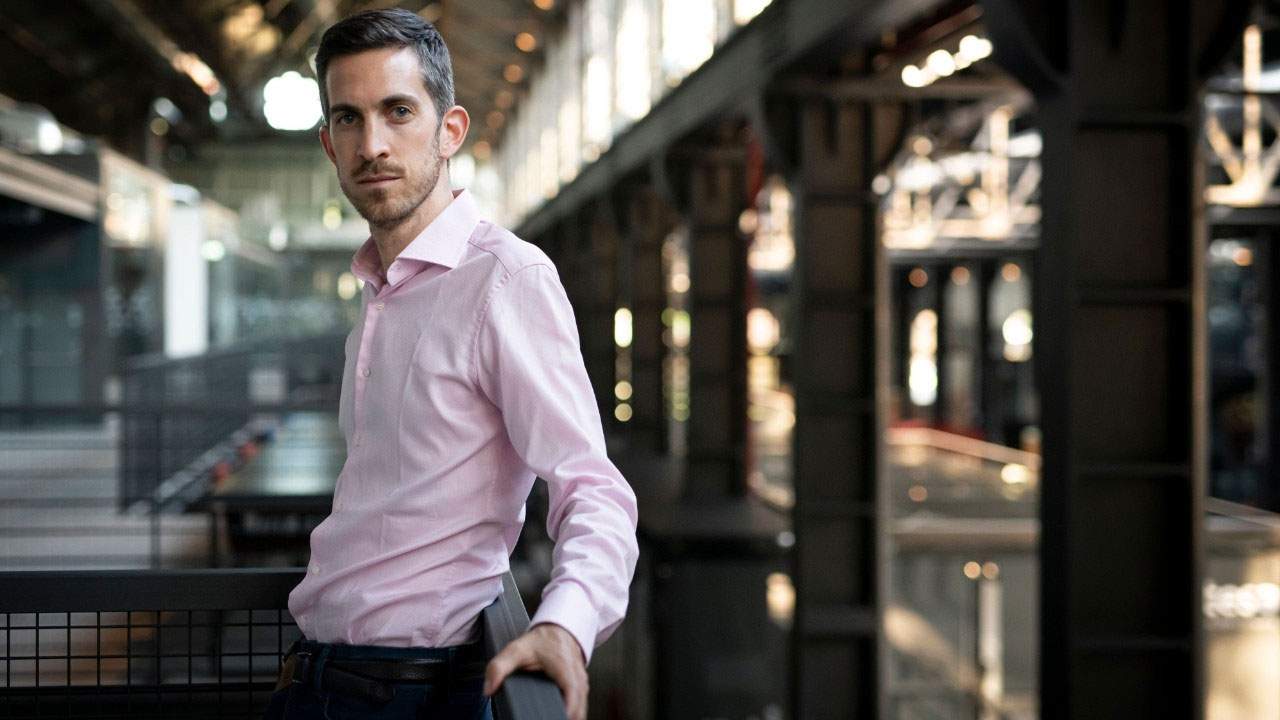
IB. After a year and a half of closures and restrictions, the twenty-fifth edition of MiArt, the first fair in Italy to return in its presence version, has ended. What were the expectations?
NR. The expectation was to return to making a fair that was in continuity with past editions, that is, with the direction that Vincenzo De Bellis had imposed, and which had then been continued by Alessandro Rabottini. We therefore expected to return to normalcy. From the point of view of expectations on the public there was obviously more uncertainty even as recently as a month and a half ago, although I and the entire Fiera Milano team were well convinced of what we were doing. However, I must say that the response was very positive and very encouraging, both in terms of the numbers of galleries that participated, 142, but also and especially in terms of the audience: we had a drop in the audience of less than 30 percent, which given the context already seems to me a huge success. In my opinion then we also had good results from a sales point of view. I talked to several galleries, which were finally able to resume contacts even vis a vis with their own collectors but also with new collectors, and this also resulted in several sales... because then the ultimate goal of an art fair is precisely to give energy, sap, resources even economic resources to the gallery system.
So summing up, the final balance is higher than expected.
Yes, it was positive, even more than we expected.
This was the first time you were in charge of MiArt and a large art fair in general: how did you approach this new experience, what did you choose to focus on and what did you want to change from your predecessor?
I approached the experience by first trying to learn this new profession. In fact, I wanted, for my first year, to keep both the working team and the committee that had built the 2019 edition and also the 2020 edition that was never held in attendance, so I wanted to learn before making changes and improvements. To make an analogy, let’s say I wanted to test the car on the highway before, possibly, changing the bumper, the mirror or the wheels. Now that I have learned, there will definitely be changes in terms of layout and some strategies in the next edition as well, but they will come from a careful analysis of what worked and what did not work in 2021. What I learned from my predecessor and what he learned from Vincenzo De Bellis is the focus on quality-that was our primary goal. The reason we wanted fewer galleries than in 2019 was precisely because we wanted to keep the same galleries as in the past and not add too many new ones (the new entries could be counted on the fingers of our hands). That’s because it was obvious that we couldn’t do a fair of 170 or more galleries again this year, so we tried to widen the mesh of quality, which we will also try to do in these six months leading up to the next edition. And we will then try to bring back especially foreign galleries, which had more difficulty in participating this year for obvious reasons, but we hope they will come back to us next year.
Although MiArt was held in attendance, you also chose to maintain a digital form, a remnant of last year’s entirely online edition due to the pandemic. Why this choice and what advantages does the digital form have?
Because it is inevitable. It is obvious that we are going to move closer to the digital experience and sphere, however, if there is something that this first year and a half of the pandemic has taught us, it is precisely that today these two worlds are not comparable. When I started this edition, I called all the galleries, I made more than 200 phone calls in two months, I asked everybody what their main goal was, and the galleries said they wanted to go back to doing a physical fair, and they didn’t want only a digital fair to be proposed to them. So I listened to them and tried to build a physical project but not forget the digital, because what we learned is that it’s not enough, but it’s not enough the digital offer today because you have to work on it again, you have to test it, you have to implement it, you have to test it, you have to grow it, and to grow it obviously it’s good to carry it, so to put it side by side with the physical edition. In addition, the digital fair also has the obvious advantage that for all the audiences who could not come to MiArt, for example, because of travel restrictions (for example, collectors from South Africa and South America, two areas we have invested in the past because there are good collectors there), it is an opportunity to see the fair: they could not come to Milan however we managed to reach them somehow. So, a twofold purpose: to grow the platform, test it even more and improve it, and to increase the outreach of the fair itself.
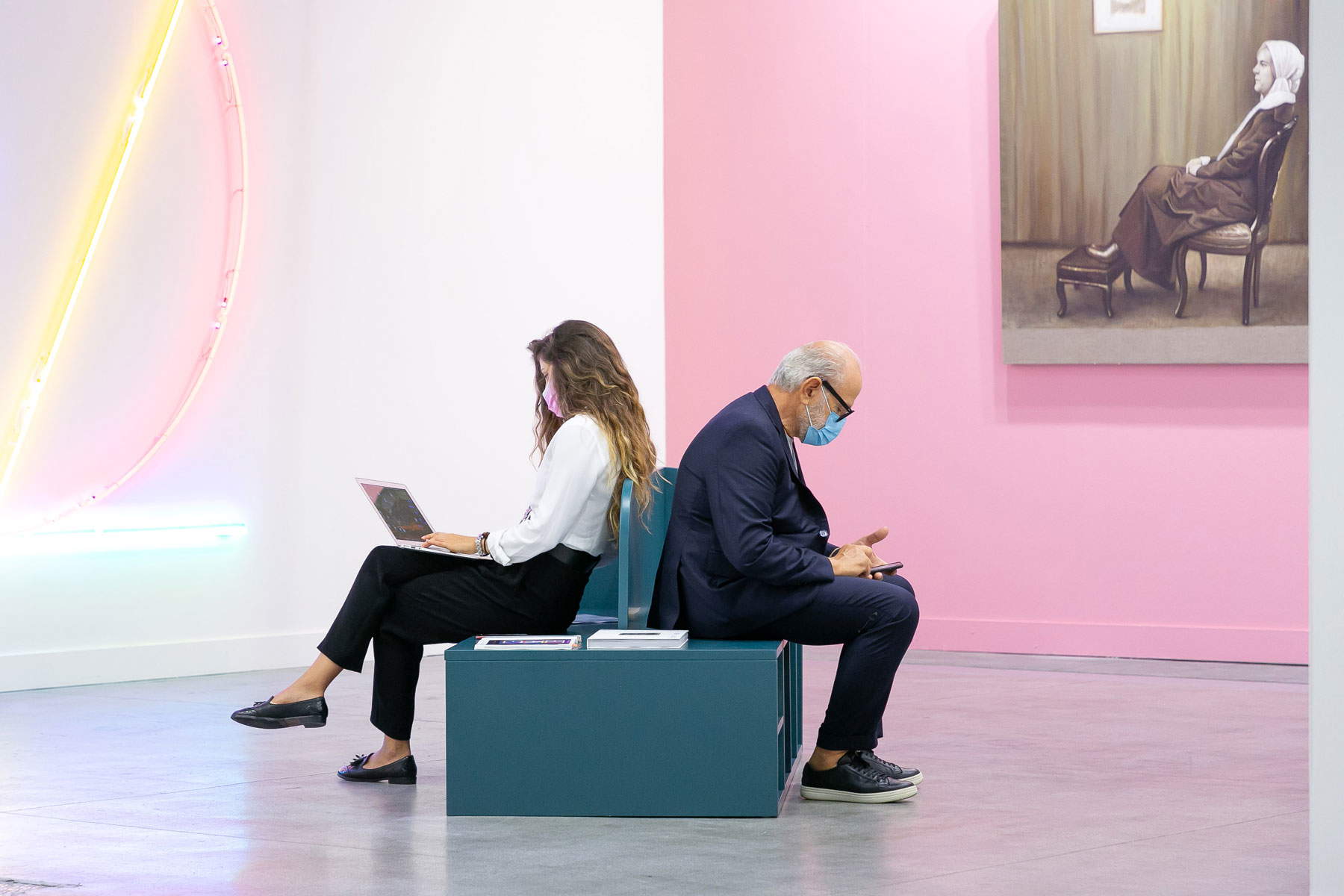
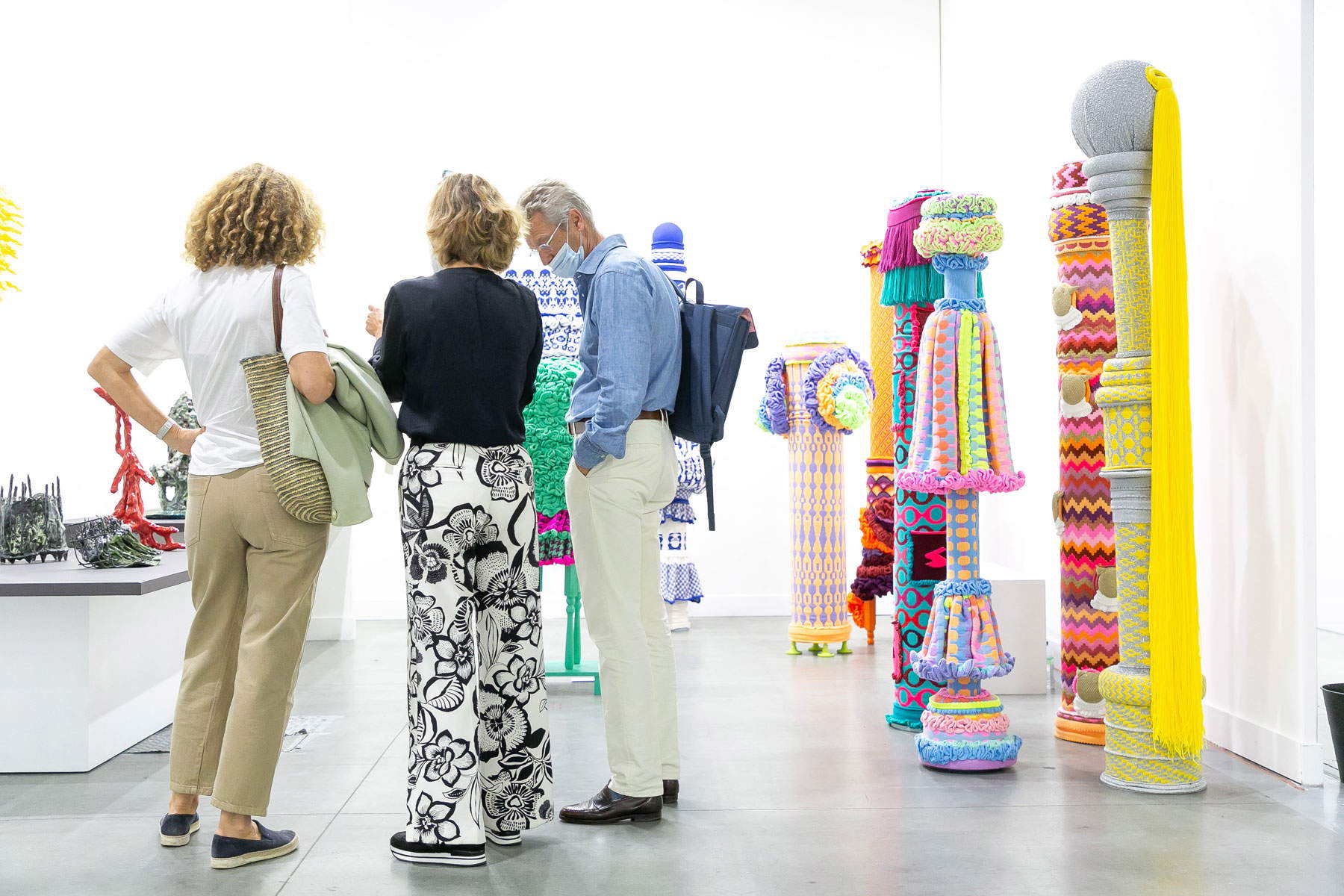 Mi
Mi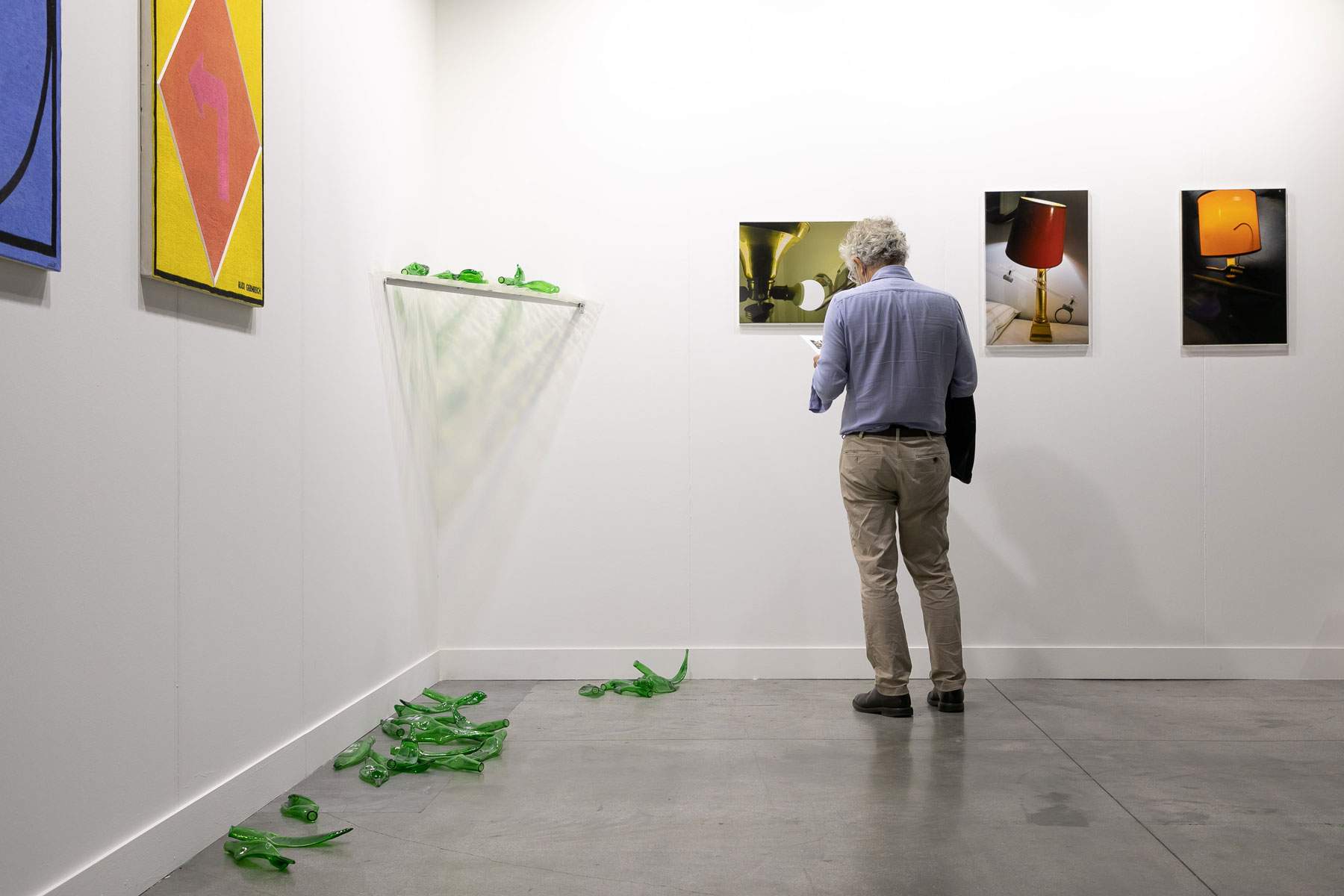 Mi
Mi
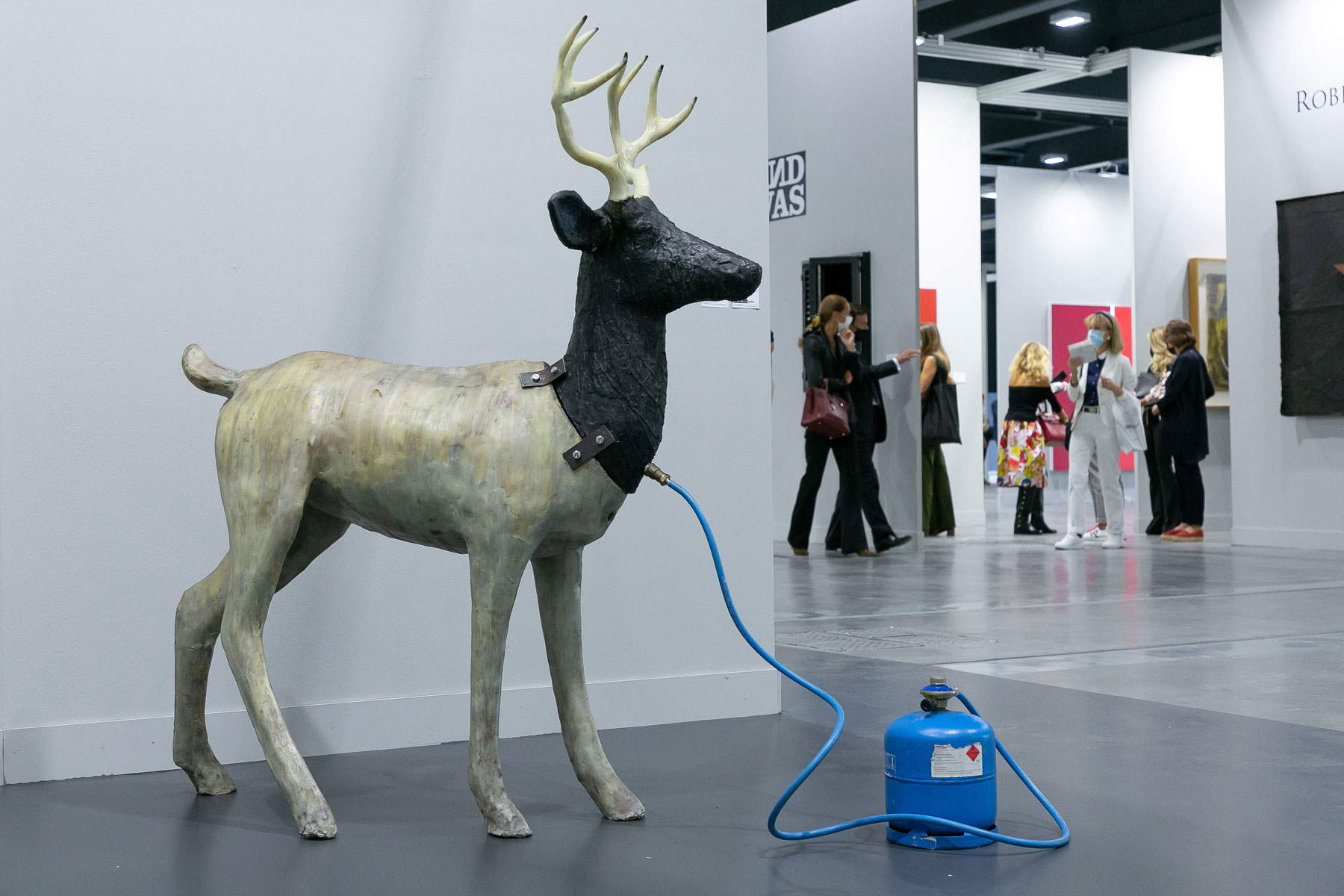

What kind of audience attended this thing edition of miart?
It was definitely a more attentive audience than in the past, in the sense that that smaller percentage of the audience was mainly made up of the curious. We are interested in the curious anyway, I like a general audience to come and not just collectors, but certainly the pandemic made a little more selection, so those who came to MiArt came because they really wanted to come. So there were a lot of collectors (all the major Italian collectors and a few European collectors, while collectors from overseas were absent for obvious reasons), but there were also a lot of insiders: I saw a lot of museum directors, a lot of curators, and they all told me that this was an edition where it was easy to talk, because it was an edition with less of a crowd, with less of a crush, with more opportunities to see things, with more opportunities to talk to each other more calmly. Basically it was an audience of collectors, of insiders and of curious Sunday shoppers, which are interesting to us anyway, at least they are to me because if I can get somebody excited about art I think I’ve done my job well.
However, there were those who complained about the concurrence with Art Basel, which was held just a week after MiArt: this circumstance may have taken away from MiArt’s audience. For example, some, both at the fair and afterwards, pointed out the low presence of museum directors. How much did this situation weigh?
I am the first to complain, because we moved long before Basel: we announced the dates in December, Basel in February. So even I would have very gladly avoided the concurrence. From the point of view of difficulties, the main ones for me were towards the galleries that were a little bit in the logistical nightmare of having to do two fairs in four days. I am glad that so many galleries, especially the Italian ones, decided to roll up their sleeves, make an extra effort, and do both fairs. I’m thinking of Kaufmann, Raffaella Cortese, Lia Rumma and others. Others, on the other hand, especially the international ones, we lost them mainly for this reason, because not being based in Italy it was more difficult to come to us, set up and then run to Basel. From the point of view of the public, we also benefited in part: there were several collectors who came to us on the weekend and then took four hours by train or car to get to Basel immediately afterwards, in a kind of cont inuity between the two fairs. From the point of view of museum directors, I actually saw many at MiArt and saw few in Basel (I was in Basel on Monday to see how that fair worked), and I found, with all due proportion, the same situation as at MiArt: fewer visitors, and more European than from overseas. Interestingly, though, I noticed that there were fewer museum directors and fewer curators than at MiArt, perhaps because Basel is spread out over a whole week, so it’s not like they all had to be there at that time. I, at MiArt, at least the Italian ones I saw them all, while for the international ones it also has to be said that there is not only the concurrence of Basel, but this is objectively the most flooded September ever in the history of art appointments, and it is very complicated. However, we all hope that this was an exception in history and that we can return as quickly as possible to a normality even of calendar precisely to avoid these situations.
Through MiArt’s publishing projects and through the very title of the 2021 edition, you chose to pay special attention to the poetic word with verses, quotations, poems. Why this choice?
Because our first goal was to rebuild a dialogue with the galleries, with the collectors, with all the stakeholders of the fair. Of course we started with the most trivial and basic thing, and that is words. We had to find new words, a new language to talk to our stakeholders. I became fascinated by the suggestion that poetry is, fortunately, a universal language that touches everyone’s strings, even if it is often thought of as cryptic, courtly. I have faith in poetry’s ability to establish a dialogue, so we started from there, from wanting to build trust through words and in the poetic word in particular, and this accompanied us and punctuated all our moments a little bit. This was also because I had the comfort of seeing that every time I talked about poetry, threw out verses or pulled out quotes, the other side (whether they were collectors, gallerists, museum directors, institutions, the city of Milan itself) responded enthusiastically: poetry was the spark that then had a series of dialogues and continuous exchanges built, as in a game of poetic ping pong between us and all the stakeholders we have around the fair.
One last question to conclude: how do you see the art scene today coming out of the pandemic?
This is a very broad question: there is to say meanwhile that we come from a terrible year and a half. It was very hard mainly because the pandemic disrupted the order of things and created so much uncertainty, so much inability to plan, it really created a rupture along with a domino effect, because for example disrupting a museum’s programming means maybe procrastinating or canceling the artist’s production, who no longer has the museum’s advice and so they decide to turn to the gallery for support, but also the gallery has experienced difficult times, and so on. Obviously the problems were macro, and the micro of the art world went a little bit to the background so we are now having to resurface some of the ruins of this year and a half: what comforts me is that I see great energy, and the scene I saw at MiArt is very encouraging to me, because I really saw people again stepping back into the aisles of a fair to meet, to talk, to plan with a spirit that until even six months ago was hard to find because there was still a lot of surrender. Now I see from so many situations (our fair, the various museums that have opened, events like the one in Procida, so many small events) that it is possible to imagine a future again, and I think that from this we can only improve, capitalize and build something new on the ruins of this last year and a half.
Warning: the translation into English of the original Italian article was created using automatic tools. We undertake to review all articles, but we do not guarantee the total absence of inaccuracies in the translation due to the program. You can find the original by clicking on the ITA button. If you find any mistake,please contact us.